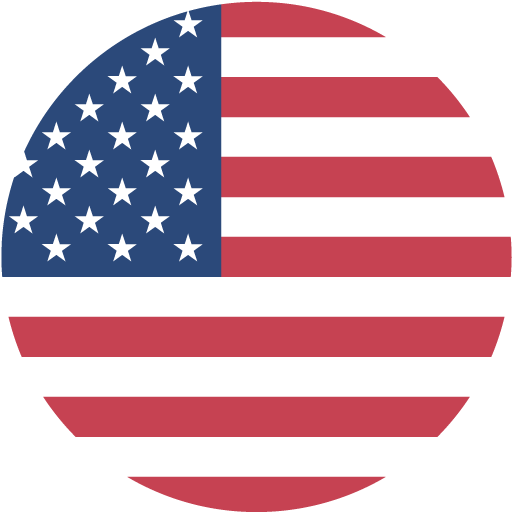Invented in 1907 by a Belgian chemist living in the USA, plastic quickly became touted as the wonder material. In the 1950s, it became the ultimate throwaway product: flexible, light, versatile, and inexpensive.
A half-century of development led to new forms of plastics, but by the end of the 1960s, the alarm bells were ringing. Now, scientists are beginning to understand the potential harm that 'microplastics' can cause. This article examines the role plastic plays in laundry sheets.
Do Laundry Sheets Contain Plastic?
PVA has been used in food, pharmaceutical, and cosmetic products for decades.
Laundry detergent sheets contain PVA, or Polyvinyl Alcohol, a water-soluble polymer. PVA may biodegrade under controlled conditions, such as in some wastewater treatment systems or industrial composting. However, it may not easily break down in natural environments like rivers or oceans.
Is PVA a Type of Plastic?
PVA is a type of plastic—but unlike many other types, it’s water-soluble.
Polyvinyl Alcohol (PVA), sometimes called PVOH or PVAI, is a water-soluble synthetic (not naturally occurring) polymer derived mainly from fossil fuels. Other synthetic polymers commonly found in home products include polyester, Teflon, and polyethylene.
PVA is the coating found on tablets you take, and it's an ingredient in dishwasher detergent pods, laundry pods, and laundry detergent sheets.
Why It's Used in Laundry Sheets
Laundry sheets are thin, pre-measured rectangles of detergent that look like tissues and are like the sheets you put in your dryer.
PVA is a core component in laundry sheets. It binds the ingredients together, protecting them from environmental changes until the sheet is put into water, whereupon the PVA and the soap contents dissolve.
PVA plays a key role in the function of laundry sheets. Here are a few reasons why.
Water Soluble
PVA is soluble in water. Our laundry sheets dissolve in seconds, even in cold water, both in the machine and when handwashing or presoaking.
Improves Product Performance
The quick dissolving properties of PVA support the function of other ingredients in laundry sheets, helping them disperse efficiently, even at lower temperatures.
Mess-free Dispensing and Storage
Using PVA helps create compact sheets that are convenient and easy to use—remember plastic jugs and constant liquid spills on laundry day?
Adjustable Dosing
It's possible to tear laundry sheets to the size you need. At Freddie,our detergent sheets can be ripped to adjust the dose. This is more accurate than free-running liquids—most people dose too much—and an alternative to laundry pods, where you're stuck with a set amount.
Reduces Plastic Waste
With laundry detergent sheets, you can ditch that plastic jug and the container for liquid laundry detergent.
PVA vs. Other Microplastics
PVA has received some negative press recently. However, the overwhelming evidence (including a pushback issued by the American Cleaning Institute at recent claims) is that while PVA is a synthetic polymer and a type of plastic, it’s water-soluble and not classified as a microplastic. However, whether it fully degrades in real-world conditions like oceans and wastewater systems is still under scientific scrutiny—the jury’s out on whether PVA may contribute indirectly to water pollution.
The US Environmental Protection Agency (EPA) describes microplastics as plastic particles ranging in size from 1-5mm that negatively impact human health and the environment.
An estimated 10 to 40 million metric tons of tiny plastic fragments are released into the environment every year, a statistic predicted to double by 2040.
Some of this plastic comes from larger items, but the problem with any plastic is that it just never goes away, but breaks down into finer and finer particles.
Consequently, microplastics can have significant impacts on the environment and human health.
Microplastics: Environmental Impacts
Health Concerns
Some scientists maintain that one person ingests microplastics equivalent to the size of a credit card every week. Studies suggest that these microplastics could be the culprit for heart attacks, some types of cancer, and reproductive issues.
Microplastics have been found in multiple organs in the human body, including the brain, heart, stomach, and placenta of pregnant mothers.
Scientific studies in birds and fish have shown that microplastics make them more vulnerable to infections and changes, including inflammation, abnormal organ development, cell damage, and an impaired immune system.
In people, scientists are beginning to establish links between microplastics and poor respiratory health, digestive and reproductive problems, and a suspected link to lung and colon cancer.
The US federal government has set a target of eliminating single-use plastics by 2035.
Harm to Marine Life
You can't see microplastics in oceans and rivers, but these tiny fragments are present in marine ecosystems worldwide and are a significant threat, jeopardizing water life and associated species.
Larger plastic particles group together with solid pieces and can cause suffocation, drowning, or strangulation to aquatic life. Seabirds, turtles, and crustaceans are among the most threatened by the impact of plastic.
Ingestion of microscopic plastic particles jeopardizes the health of marine life.
Water Pollution
Microplastics also pollute the water we consume and have been found worldwide in drinking water, both bottled products and tap water. In a recent global study, the US scored the highest contamination rate at 94%.
The World Health Organization (WHO) is not yet worried about the findings because there is insufficient scientific data to understand this impact on human life, animal life, and the planet.
Secondary issues from microplastics in drinking water include inhalation, dermal contact, and food consumption.
As more data becomes available, recommendations for the production of plastic will likely change, and they'll become the subject of more stringent regulations.
Frequently Asked Questions
Does Laundry Powder Have Microplastics?
Most traditional laundry powders don’t contain microplastics, but some may include synthetic ingredients used for things like softening or preventing dirt from resettling on clothes. That said, the biggest source of microplastics from laundry isn’t usually the detergent—it’s the tiny fibers that shed from synthetic fabrics like polyester. If you’re using powder, it often comes in a cardboard box, which is a plus, but don’t forget to check if the packaging and scoop are recyclable too.
Final Thoughts
When it comes to microplastics in laundry sheets, the reality is a little nuanced. While detergent sheets may look similar, not all are formulated the same way. Some contain plastic-based fillers or ingredients that don’t readily break down in the environment.
PVA, a water-soluble polymer used in many detergent sheets (including Freddie), plays an important role in performance. At Freddie, we’re intentional about our ingredient choices and how we can limit our environmental impact. Our laundry detergent sheets are made without dyes, parabens, phosphates, or 1,4-dioxane—and they come in recyclable cardboard packaging, not plastic jugs.
If you’re looking for a simple, low-waste way to do laundry, Freddie laundry sheets are designed to make laundry day easy, without the bulky packaging or guesswork. In a nutshell, Freddie offers convenience, clean clothes, and less packaging waste than traditional laundry detergents.


 United States
United States
 Canada
Canada
 Australia
Australia
 United Kingdom
United Kingdom
 Belgium
Belgium
 France
France
 Germany
Germany
 Hong Kong
Hong Kong
 Italy
Italy
 Japan
Japan
 New Zealand
New Zealand
 Singapore
Singapore
 Spain
Spain
 Sweden
Sweden
 United Arab Emirates
United Arab Emirates

